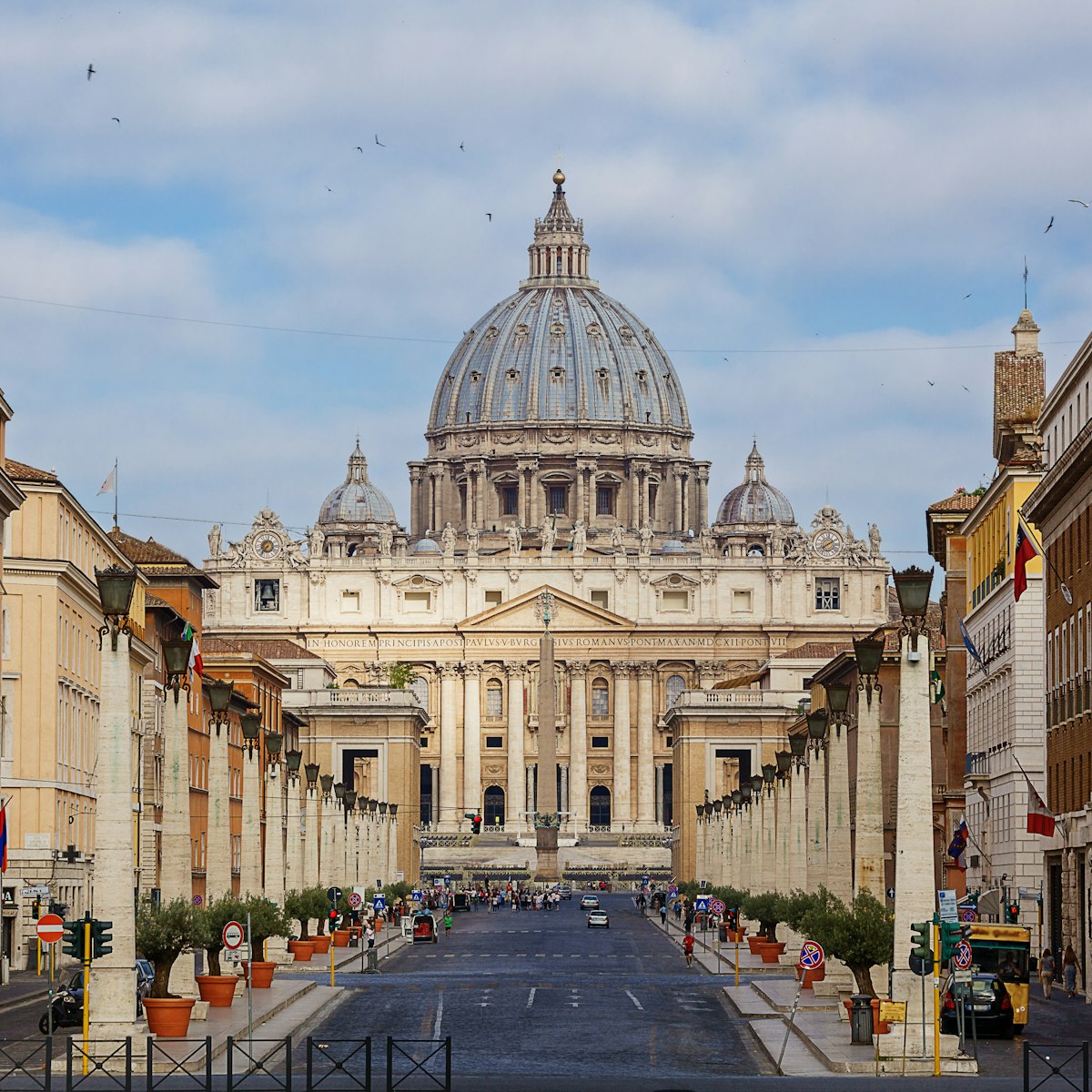The largest church in Rome after St Peter’s (and the world’s third-largest), this vast basilica stands on the site where St Paul was buried after being decapitated in AD 67. Built by Constantine in the 4th century, it was largely destroyed by fire in 1823 and much of what you see is a 19th-century reconstruction. The echoey results have a modern feel and draw large groups of pilgrims who are dwarfed by the huge interior.
However, many treasures survived, including the 5th-century triumphal arch, with its heavily restored mosaics, and the Gothic marble tabernacle over the high altar. This was designed around 1285 by Arnolfo di Cambio together with another artist, possibly Pietro Cavallini. To the right of the altar, the elaborate Romanesque Paschal candlestick was fashioned by Nicolò di Angelo and Pietro Vassalletto in the 12th century and features a grim cast of animal-headed creatures. The cloisters would be a wonderful lavender-scented refuge if they let you sit down (there are no benches or seats).
St Paul’s tomb is in the nearby confessio, somewhat lost in the unfortunately weed-choked grounds.
Looking upwards, doom-mongers should check out the papal portraits beneath the nave windows. Every pope since St Peter is represented here, and legend has it that when there is no longer room for the next portrait, the world will fall. Note that there are only six blank spots left after Francis.
Also well worth a look is the polychromatic 13th-century Cosmati mosaic work that decorates the columns of the cloisters of the adjacent Benedictine abbey.








